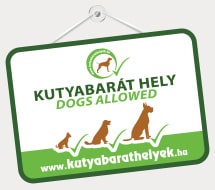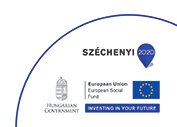Vizsla (Rövidszörü)

Vizsla (Rövidszörü)
Hungarian Shorthaired Pointer is a versatile gun dog that must be able to work in
the field, forest and water, having the following typical qualities: an
excellent nose, firmness on the point, excellent retrieves and
determination to remain on the scent even when swimming, which he
manifestly enjoys. He copes with difficult terrain as well as extreme
weather conditions. As he is intended to be an efficient hunting dog,
gun and game shyness, unwillingness to point and retrieve, as well as
a dislike of water are undesirable. Because of his easy going nature
and his adaptability, he can easily be kept as a companion dog in the
house.
FCI-Standard N°57
HUNGARIAN SHORT-HAIRED POINTER (VIZSLA)
(Rövidszörü Magyar Vizsla)
Origin: Hungary.
Utilization:
A versatile gun dog that must be able to work in the field, forest and water, having the following typical qualities: an excellent nose, firmness on the point, excellent retrieves and determination to remain on the scent even when swimming, which he manifestly enjoys. He copes with difficult terrain as well as extreme weather conditions. As he is intended to be an efficient hunting dog, gun and game shyness, unwillingness to point and retrieve, as well as a dislike of water are undesirable. Because of his easy going nature and his adaptability, he can easily be kept as a companion dog in the house.
FCI-Classification:
- Group 7 Pointing Dogs.
- Section 1 Continental Pointing Dogs.
- With working trial (Field and Water Trial)
Bried Historical Summary:
- The ancestors of the Hungarian Vizsla came into the Carpathian Basin with the nomadic Hungarian tribes. Written descriptions and graphic illustrations are found in documents of the 14th century already. From the 18th century, his importance as a hunting dog has been increasing steadily. As early as the end of the 19th century, competitions for pointing dogs were organised in Hungary, in which Hungarian Vizslas (among others) participated with great success. In those days, other Gundog breeds most likely played an important part in the development of the breed. FCI-St. N°57 / 13.09.2000 3 The specific modern breeding started in 1920, as a result of which, the Short-Haired Hungarian Vizsla received recognition by the FCI in 1936.
General Apperance:
- Medium sized, elegant gun dog of noble appearance with short russet gold coat. His rather light, dry, lean structure embodies the harmony of beauty and strength.
Important Proportions:
- The body length slightly exceeds the height at the withers.
- The depth of the brisket is slightly less than half the height at the withers.
- The muzzle is slightly shorter than half the length of the head.
Behaviour / Temperament:
- Lively, friendly, evenly tempered, to be trained easily. His outstanding willingness to keep contact with his master while working is one of his essential qualities. He cannot bear rough treatment and must be neither aggressive nor shy.
BODY STRUCTURE
1. Head
- Dry, noble, well proportioned.
- CRANIAL REGION
- Skull: Moderately wide, slightly domed. A slightly pronounced groove runs from the moderately developed occiput towards the stop. The superciliary ridges are moderately developed. Stop: Moderate.
- FACIAL REGION:
- Nose: Well developed and broad with nostrils as wide as possible. The colour of the nose harmonises in a dark shading with the coat colour.
- Muzzle: Blunt, not pointed; with strong jaws, strongly muscled. The bridge of the nose is straight,
- Lips: Tightly fitting, no pendulous flews.
- Jaws/Teeth: Powerful jaws with a perfect, regular and complete scissor bite, the upper teeth closely overlapping the lower teeth and set square to the jaws; with 42 healthy teeth according to the dentition formula.
- Cheeks: Strong, well muscled.
- Eyes: Slightly oval, of medium size. Well fitting eyelids. Intelligent and lively expression. The brown eye harmonising with the coat colour, as dark as possible preferred.
- Leathers: Set on at medium height, a little backwards. Fine leathers hanging closely to the cheeks, ending in a rounded V shape. The length is about three quarters of the length of the head.
2. Neck
- Of medium length, harmonising with the overall appearance. The nape very muscular and slightly arched. Tightly fitting skin at the throat.
3. Body
- Withers: Pronounced and muscular.
- Back: Solid, strong, well muscled, taut and straight. The vertebral spines should be hidden by the muscles.
- Loin: Short, broad, tight, muscular, straight or slightly arched. The portion from back to loin is well coupled.
- Croup: Broad and of sufficient length, not cut off short. Sloping slightly to the tail. Well muscled.
- Chest: Deep and broad with well developed, well muscled, moderately arched forechest; sternum extending as far back as possible. The sternum and the elbow should be at the same level. Ribs moderately arched. Last ribs carried well back.
- Underline: Elegant, tight, arching line towards the rear, slightly tucked up.
4. Tail
- Set on slightly low, strong at the base, then tapering. In countries where tail docking is not prohibited by law, the tail may be shortened by one quarter to avoid hunting hazards. If tail docking is prohibited, the tail reaches down to the hock joint and carried straight or slightly sabre like. On the move, it is raised up to the horizontal. It is well covered by dense coat.
5. Limbs
- FOREQUARTERS:
- General appearance : Viewed from the front, straight and parallel. Viewed from the side, legs are vertical and placed well under the body. Good bones, strongly muscled.
- Shoulders: Long, sloping and flat, well attached shoulder blade. Flexible. Strong, dry musculature. Well angulated between shoulder blade and upper arm.
- Upper arm: As long as possible. Well muscled.
- Elbows: Fitting close to the body, however not tied in, turning neither in nor out. Well angulated between upper arm and forearm.
- Forearm: Long, straight, sufficiently muscled. Bone strong, but not coarse.
- Pastern joint: Strong, tight.
- Pastern: Short, only very slightly sloping.
- Forefeet: Slightly oval, with well knit, sufficiently arched, strong toes. Strong brown nails. Tough, resistant, slate grey pads. The feet are parallel when standing or moving.
- HINDQUARTERS:
- General appearance : Viewed from behind, straight and parallel. Well angulated. Strong bone.
- Upper thigh: Long and muscular. Good angulation between pelvis and upper thigh. Stifle: Well angulated
- Lower thigh: Long, well muscled and sinewy. Its length is almost equal to that of the upper thigh. Good angulation between lower thigh and metatarsus.
- Hock joint: Strong, dry and sinewy, rather well let down.
- Metatarsus: Vertical, short and dry.
- Hind feet: Similar to forefeet.
6. Gait / Movement
- The typical gait is an animated, light-footed trot, elegant and far reaching, with much drive and corresponding reach. Not exhausting gallop when working in the field. The back is firm and the topline remains level. Good, upright carriage. Pacing undesirable.
7. Skin
- Tightly fitting, without folds. The skin is well pigmented.
8. Coat
- Hair: Short and dense, should be coarse and hard at the touch. On the head and the leathers, it should be thinner, silkier, and shorter. The hair underneath the tail should be slightly, but not noticeably, longer. It should cover all of the body; the underside of the belly is a little lighter coated. No undercoat.
- Colour: Various shades of russet gold and dark sandy gold (semmelgelb). The leathers maybe a little darker, otherwise uniform in color. Red, brownish, or lightened color is undesirable. A little white patch on the chest or at the throat, not more than 5 cm in diameter, as well as white markings on the toes, are not considered faulty. The color of the lips and the eye rims corresponds to the color of the nose.
9. Size and Weight
- Height at withers:
- Dogs: 58 - 64 cm
- Bitches: 54 - 60 cm
- It is ineffective to increase the height at the withers. A medium-size should be aimed at. Overall balance and symmetry are much more important than the mere measurable size.
10. Faults
- Any departure from the foregoing points should be considered a fault and the seriousness with which the fault should be regarded should be in exact proportions to its degree and its effect upon the health and welfare of the dog.
11. Disqualifying Faults
- Aggressive or overly shy dogs.
- Any dog clearly showing physical or behavioral abnormalities shall be disqualified.
- Distinct deviations from the characteristics of the breed.
- Strong deviation from the sexual characteristics
- Atypical head.
- Spotted(butterfly) nose
- Pendulous or dribbling flews.
- Under- or overshot mouth. Wry mouth, including all intermediate forms.
- One or more missing incisors and/or canine and/or premolars 2-4 and/or molars 1-2; more than two missing PM1; the M3 are disregarded. Not visible teeth are assessed as missing ones. Supernumerary teeth not in line with the o-others.
- Cleft palate, harelip.
- Light yellow eyes. Very loose eyelids; ectropion, entropion. Distichiasis (double row of eyelashes)
- Pronounced dewlap.
- Dewclaws.
- Very faulty movement
- Atypical coat.
- Dark brown or pale yellow color. Parti-coloured, not uniformly colored. White chest patch larger than 5 cm.
- White feet.
- Lacking pigmentation either on the skin or on the lips and eye rims
- Deviation of more than 2 cm from the above-mentioned heights at withers.
N.B.:
- Male animals should have two apparently normal testicles fully descended into the scrotum
- Only functionally and clinically healthy dogs, with breed typical conformation, should be used for breeding.













